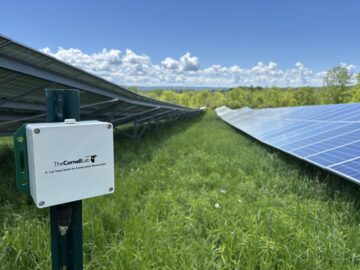Where Solar Panels Meet Songbirds in New York State
August 1, 2025
Timothy Boycott is a doctoral candidate in natural resources and the environment whose summer research focused on examining the ecological impacts of renewable energy across New York state.
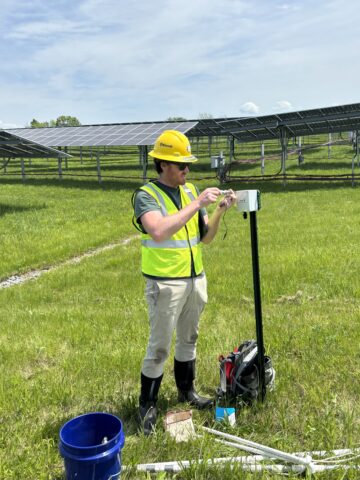
Describe the location of your field research.
Our research is conducted throughout New York state.
What’s the focus of your research?
New York aims for 70% renewable energy by 2030, with large-scale solar development expanding in rural areas. However, biodiversity faces threats from habitat loss. Our research examines the ecological impacts of renewable energy to minimize harm to wildlife while advancing sustainability. We focus on grassland birds, a high-conservation priority, due to solar siting overlapping critical habitats. My dissertation, in partnership with state agencies and industry, explores how solar development influences bird behavior, ecology, and conservation strategies.
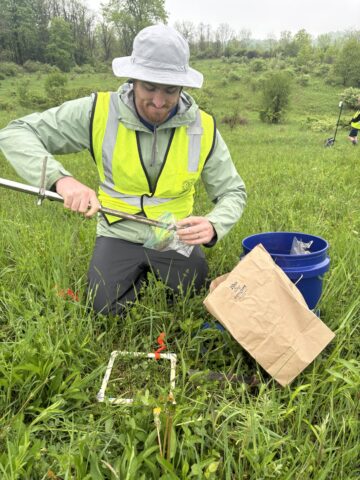
What do you hope will be the impact of this work?
Renewable energy expansion is reshaping landscapes, yet its ecological effects remain understudied. Our work aims to fill this gap by providing timely insights into how wildlife—especially imperiled species—respond to solar development. These findings will inform conservation strategies during a rapid energy transition and broader biodiversity crisis, ensuring that sustainability efforts align with ecological resilience rather than unintentionally exacerbating habitat loss.
How will field research advance your understanding of your research in a way that classes and/or theory do not?
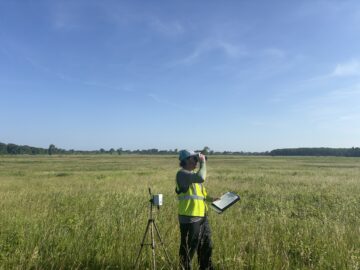
This research tackles an understudied intersection of renewable energy and ecology, requiring primary data collection to uncover how wildlife responds to solar development. Fieldwork provides essential, real-world insights beyond theory, capturing species behaviors in dynamic landscapes. By collaborating with stakeholders across disciplines—policymakers, industry leaders, and conservationists—we ensure our findings are applicable and interpretable, shaping effective strategies for balancing biodiversity conservation with sustainable energy expansion.
What has surprised you about your experience?
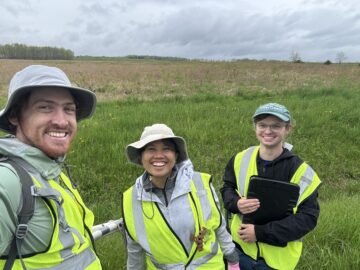
The unexpected complexity of species behaviors in these novel environments has been fascinating—some findings challenge assumptions and demand deeper study, fueling my motivation to explore further. Beyond that, I’m continually struck by the truly multidisciplinary nature of this work. I knew it was complex, but the sheer breadth—from conservation biology to sociopolitical dynamics—underscores how deeply intertwined ecological sustainability is with broader societal structures.
How did Cornell programs and/or faculty mentors help connect you with the opportunity to carry out this research?
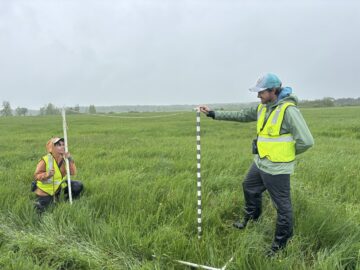
I am a graduate student in Cornell’s U.S. Geological Survey Cooperative Fish and Wildlife Research Unit, which bridges university expertise with agency partners tackling pressing conservation challenges. Joining such an applied, high-impact program was a longtime goal—an incredible experience that’s both qualifying for me and valuable for all involved. This work isn’t just academic; it’s essential for informing real-world biodiversity and energy policy decisions. These cooperative research units have a long and storied history of conservation success, strengthening ties between academic institutions, agencies, and the public over our shared stewardship of natural resources.
What would you say to students considering applying to Cornell for grad school?
Cornell’s status as a land-grant institution, with robust cooperative research and extension programs, was a major draw for me. Combined with its reputation for excellence across disciplines, I knew it was the ideal place to engage in high-impact, interdisciplinary study. If you’re seeking a graduate experience where rigorous research meets real-world application, Cornell offers unparalleled opportunities to collaborate across fields and contribute meaningfully to pressing global challenges.
